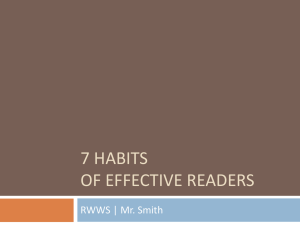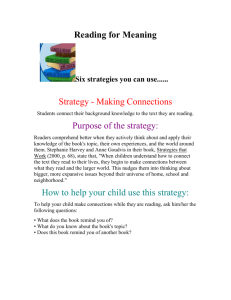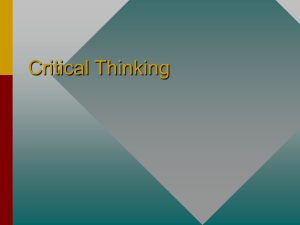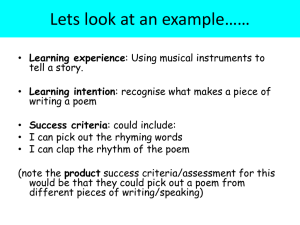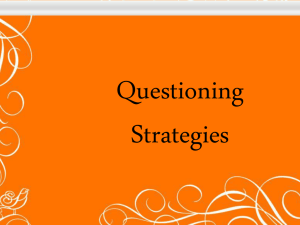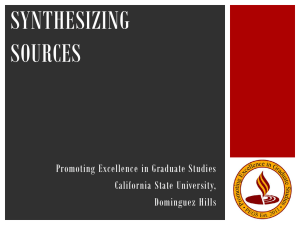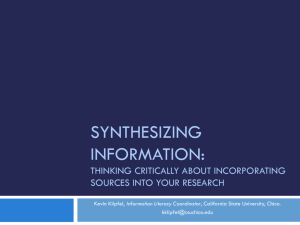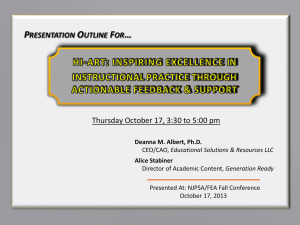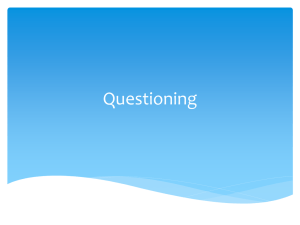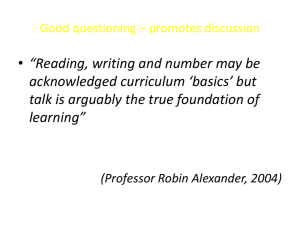Proficient Reader Research
advertisement
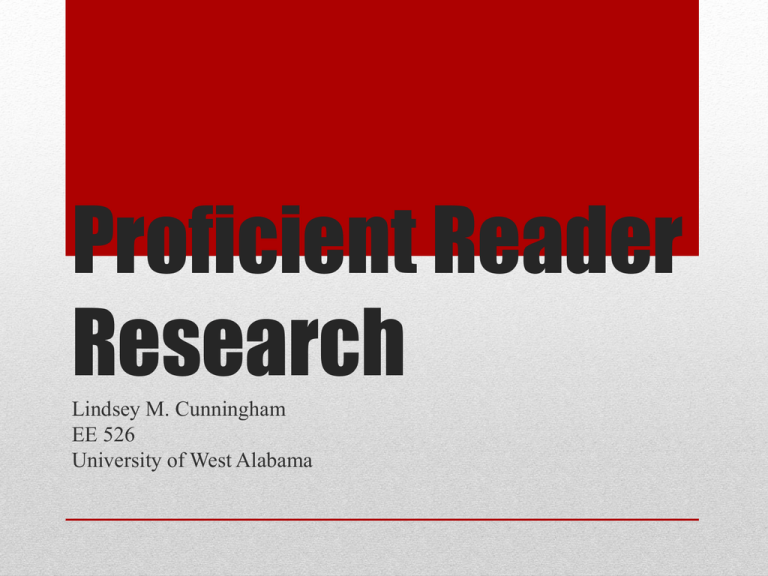
Proficient Reader Research Lindsey M. Cunningham EE 526 University of West Alabama ICE BREAKER: MAROONED Are We Collaborating? Research-Based Best Practices “The ultimate beneficiaries of education research must be children, not the researchers themselves. Enlightened educators look to education research for well-founded evidence to help them do a better job with the children they serve” (Slavin, 2004). How Can We Define Reading Ability? Reading ability can be defined as the efficiency to draw meaning from the printed page and interpret this information appropriately. Proficient Readers use the following strategies: 1. Inferring 2. Questioning 3. Picturing 4. Recalling prior knowledge 5. Synthesizing 6. Flexing What do we know about Reading Proficiency? Inferring: How do we teach our students to find what is missing? *We give them many chances to interpret material where they must create an answer by considering the clues or evidence provided. *We lead them through the thought process. *We ask them to practice with pictures, reading passages, and numbers. Questioning: How do we teach our students to be successful questioners? *We introduce them to question types. *We give them practice using each question type. *We confront them with challenges that require question combinations. *We surprise them with challenges they have never seen before. Questioning: continued *We make wonder and surprise a daily event. *We teach them persistence, resourcefulness, and inventiveness. *We give them practice mapping out questions before they actually gather information or read passages. Picturing: How do we teach our students to make powerful use of their mind’s eye? *We give them practice describing images. *We read stories with vivid description aloud and ask students to picture what they have heard. *We show students how to map out their own ideas and searches. *We ask students to convert passages by other writers into mind maps. *We show students how to view long articles as clusters of ideas. Synthesizing: How do we teach our students to mix, match, combine, and weave ideas into something new? *Beading *Puzzling *Cooking *Fabricating or Manufacturing *Inventing *Weaving Synthesizing—continued We can also teach our students strategies for synthesizing by using the word SCAMPER! S=substitute C=combine A=adjust M=modify or magnify P=put to other uses E=erase or eliminate R=reverse Flexing: How do we teach our students to try lots of different strategies and approaches when facing a thinking challenge? *We teach our students that frustration is a natural and common phase in the creative process. *We give our students perplexing predicaments and dilemmas as well as puzzles and mysteries instead of restricting them to one-sided problems. *We make sure students understand the value of thinking! How do we make these challenges enjoyable on a daily basis? *Make reading for meaning a priority. *Make time, daily, for these kinds of reading challenges. *Present challenges in oral and written format. *Time management References (2001) Read Strong: Nurturing Love of Literacy. Retrieved from http://www.google.com/imgres?imgurl=http://myweb.stedwards.edu/mikekb/ReadStrong/images/moti vation.jpg&imgrefurl=http://myweb.stedwards.edu/mikekb/ReadStrong/nutureloveparents.html Allington, Richard L. (2011). What Really Matter For Struggling Readers: Designing ResearchBased Programs. University of Tennessee, Knoxville: Allyn and Bacon Publishers Armbruster, B.B., Lehr, F., Osborn. (2001) Put Reading First: The Research Building Blocks for Teaching Children to Read. Retrieved from http://www.mifl.gov Glaeser, Patricia. (2012). Ice Breaker Activities for Teacher Professional Development. Retrieved from http://www.ehow.com/info_8254687_ice-activities-teacher-professional-development.html Harvey, Stephanie. (2004). Powerful Questioning, Good Intelligence, and Right Thinking,. Retrieved from http://questioning.org/tests/beating.html Miller, D. (2002). Reading with meaning: Teaching comprehension in the primary grades. Portland, ME: Stenhouse Publishers
